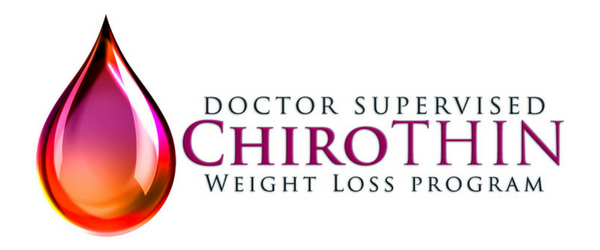
It’s estimated that 40% of people in the United States meditate at least once weekly. Meditation, and specifically the sense of mindfulness that comes with it, can have a profound impact on both an individual’s mental and physical health.
However, in the meditation community one form of the practice, transcendental meditation, tends to make a lot of headlines. This can cause some confusion about the best place to start.
So what’s better for you to focus on: transcendental meditation vs mindfulness? And what are some tips for meditation practice? In this transcendental meditation guide, we’ll answer these questions so you can start implementing these healthy practices into your life today.
What Is Transcendental Meditation?
Before we learn about meditation techniques comparison we need to cover some definitions. Transcendental meditation is a specific meditation practice started by Maharishi Mahesh Yogi in the 1950s.
With this practice, you’re given a mantra by a teacher. In some cultures, this can be a sacred utterance. Or for others, it can be a motivational phrase (like, ‘I think I can’).
When you engage with transcendental meditation you repeat this mantra to yourself silently over and over again. This repetition allows you to reach a deep state of relaxation that feels distinct from other states you’re familiar with consciousness, sleep, and dreaming.
Getting to this transcendental state isn’t always easy for people. That’s why traditional transcendental meditation is a deeply structured and systematic process. Hence, it often requires the assistance of a teacher.
What Is Mindfulness?
There’s a lot of overlap between transcendental meditation and mindfulness, or mindfulness meditation. However, while transcendental meditation is more concerned with entering a different state of consciousness, mindfulness focuses on entering a different mental state.
Specifically, mindfulness seeks to draw awareness to the present state of their existence. When you sit down to meditate, you might notice a lot of intrusive thoughts.
You might have negative feelings about your body or your eating habits. You might experience bodily sensations like pain if you struggle with a chronic condition.
Mindfulness teaches us to observe all of these things passing through our heads without judgment. This sense of detachedness allows us to notice patterns in our thinking or life that might otherwise go unobserved.
Transcendental Meditation vs Mindfulness: What Are the Differences?
Transcendental meditation and mindfulness share quite a few mental and physical health benefits. Both are linked to stress reduction and one of the biggest benefits of mindfulness meditation is fewer anxiety symptoms.
Both also have the potential to improve attention, cognitive function, PTSD symptoms, heart health, immune system function, and overall inflammation. That being said, there are some important distinctions and that begins with how it’s taught.
As we mentioned, transcendental meditation is much more strict when it comes to who can teach the practice. Only certified teachers who undergo strict training can teach transcendental meditation.
While this ensures that you receive individualized attention it doesn’t make transcendental meditation very accessible. Mindfulness, on the other hand, is much more flexible when it comes to adapting to different preferences.
It can be learned in therapeutic settings, online, through books, or even in apps that teach mindfulness for beginners. Transcendental meditation additionally requires a much larger time commitment.
With this option, you need to do at least two twenty-minute sessions per day. Mindfulness can be done anywhere you want and it’s not a huge deal if you’re too busy one day.
Which Is Better for You?
If you’re just getting started with meditation we would focus on mindfulness over transcendental meditation for beginners. For starters, you can learn it entirely on your own without the need for teachers or classes.
What’s more, it’s a lot more adaptable to the average person’s life. That being said, we don’t want to discourage you from trying transcendental meditation. Indeed, the two can often be used together.
Someone might use transcendental meditation to get into a meditation state quickly, then shift over to mindfulness to focus on any problems or feelings they might need to sort out. So we suggest getting your feet wet with mindfulness before diving into transcendental meditation.
Practice One Minute of Mindfulness Per Day
The best way to get started with mindfulness is to just dive in. For one minute each day drop what you’re doing and focus on your breath. While breathing in and out you’ll notice your train of thought drifting.
Acknowledge the thought, then turn your attention back to your breathing. This is a great practice to get into because it can be used throughout the day.
Eat With More Awareness
Mindfulness has been linked to heart-healthy habits. So how is this possible? When we bring mindfulness into our daily practices, like eating, we’re able to cut out distractions.
That means sitting down with your food and engaging with it fully. Instead of watching YouTube while shoveling food into your mouth, or swallowing fast food in the car, eating requires full attention.
Pay attention to the appearance of the food and its scents. Take small bits and eat slowly. What’s the texture like? The taste?
When you combine mindfulness with ChiroThin’s healthy eating habits it not only helps you enjoy your food more but also optimizes your relationship with it.
Apply Mindfulness to Your Exercise
Remember that mindfulness is also about listening closely to your body. This can be invaluable when applied to exercise. Often people will follow a weekly exercise routine regardless of how their body feels.
However, if your leg muscles are aching, that’s your body telling you something.
High-impact exercising with sore legs will ultimately cause more harm than good. As such, you can listen to your body and try an effective swim workout instead.
Interested in Losing Weight? Try the ChiroThin Program
We hope this guide helped you learn more about the difference between transcendental meditation vs mindfulness. Here at ChiroThin, we’re passionate about incorporating these types of practices to improve a person’s overall health and well-being.
And, when combined with our forty-two-day, doctor-supervised weight-loss program it can lead to potentially lasting results.
Best of all, you can do it by focusing on what you eat and feel, instead of exercising. Are you ready to get started on the path to a healthier you? Click here to find a ChiroThin doctor in your area.
